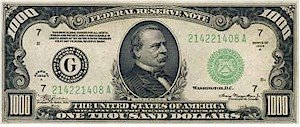
Having spent the vast majority of my business life creating and selling software; the business model I’m used to consists of relatively large expense dollars in the form of Research & Development (R&D) and Sales, Marketing, and Administration (SMA.) Since it’s software, the Cost of Goods Sold (COGS) tends to be noise leading to healthy gross margins. If the COGS are <1% of sales, the gross margin is >99%.
The advent of network delivered software model has changed that a bit with COGS as a percent of sales climbing to around 20% to support the investment and operations of the IT infrastructure necessary to deliver the software as a service to the customer. Even with the increase in COGS it still leaves a ~80% gross margin. And that kind of margin supports a healthy R&D and SMA investment on a per dollar sold basis.
The recent foray into the retail world with Oddyssea is a completely different beast. Moving from software to physical products has a huge impact on the COGS aspect of the business. The obvious aspect is the acquisition of the product for sale, but the sourcing, transport, storage, presentation, and eventual disposal of the product and packaging are material costs that all hit the COGS line.
In the retail model, we’re finding that 50% of each dollar is consumed with the life-cycle of the physical products we offer to our visitors. This means we see a 30 point drop to a gross margin 50% which means there are fewer dollars left over to cover costs, investments, and profit. One benefit on the expense side is that R&D is minimal in the retail model. SMA remains a very real set of costs to cover inside the reduced gross margin dollars.
Thus we’ve found ourselves tracking gross margin pretty closely and working to make improvements in that area of the business moving toward a long-term goal of 65-67%. In our first few months we’ve been able to log an average of 1.5 points improvement per month as we optimize our product line for sale and work to move the COGS into the desirable zone. Based upon the early data, we believe that our profit margin will result from the COGS improvement while keeping a tight hold on SMA and working to steadily increase top-line sales.
It’s exhilarating to learn a new way of doing business and taking the bits from the prior 30 years to apply in the new arena. This experience has also served to make me appreciate the simplicity and profitability of software businesses. It is MUCH easier to create a profitable software business than a business in the bricks and mortar world. The 30 points of gross margin make the software business much more flexible, forgiving, and profitable for the owner.




